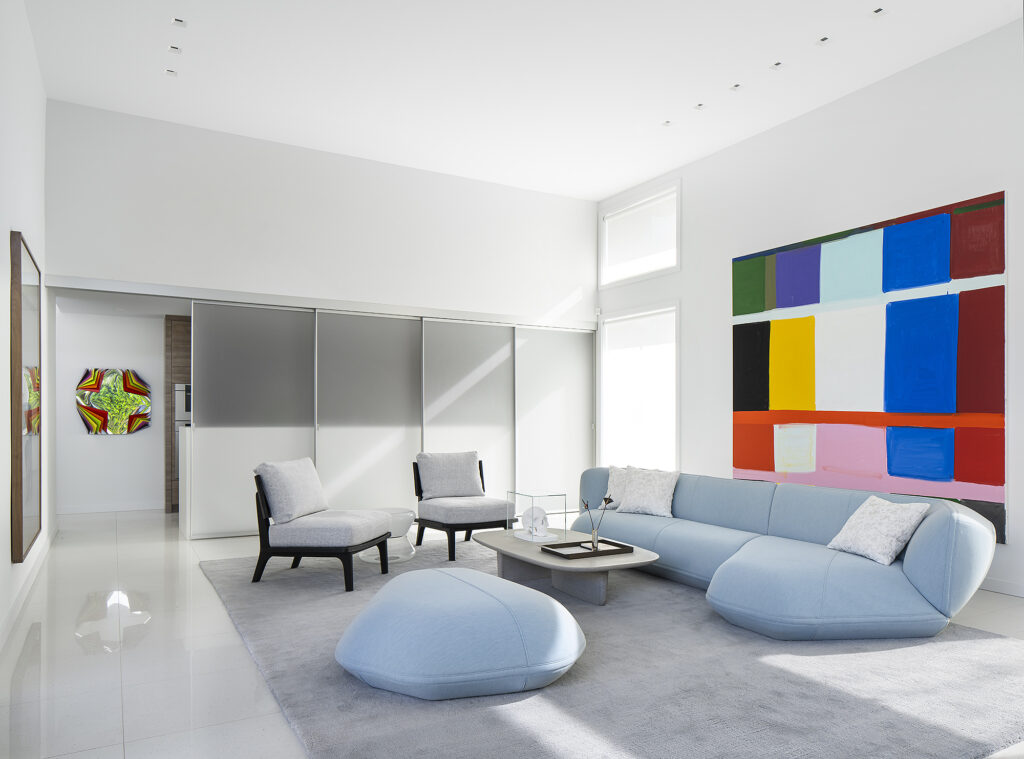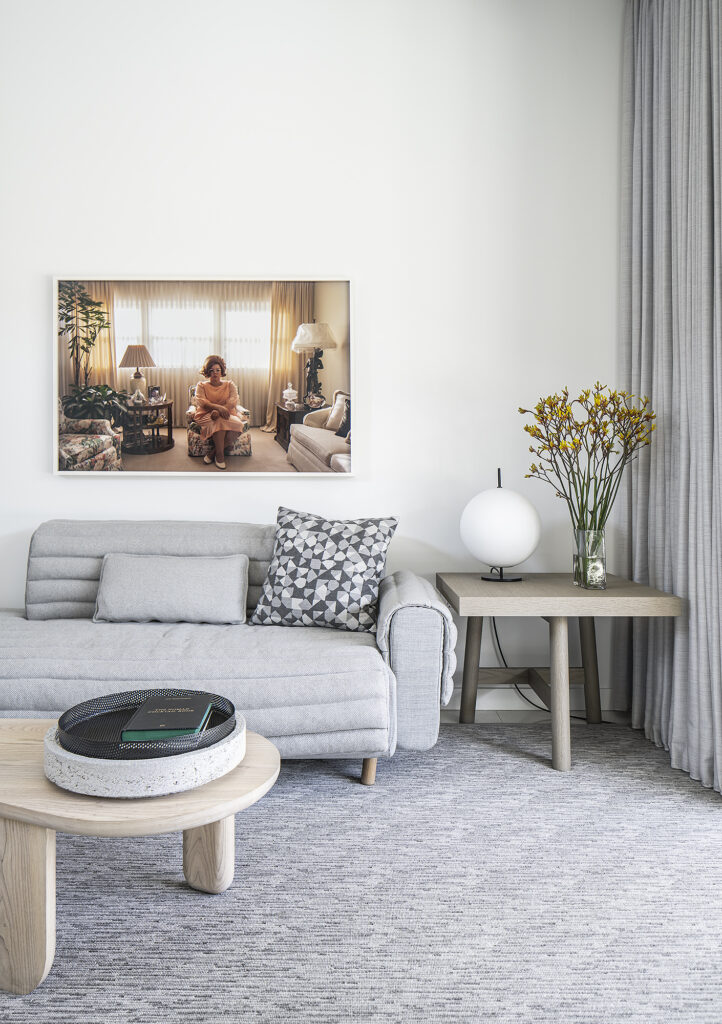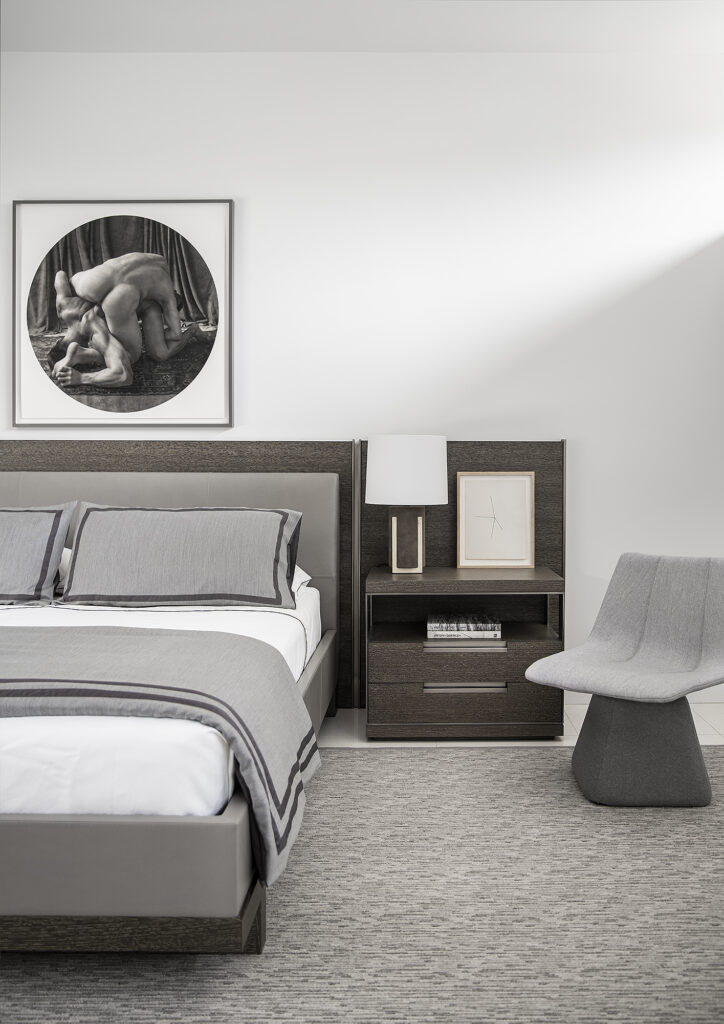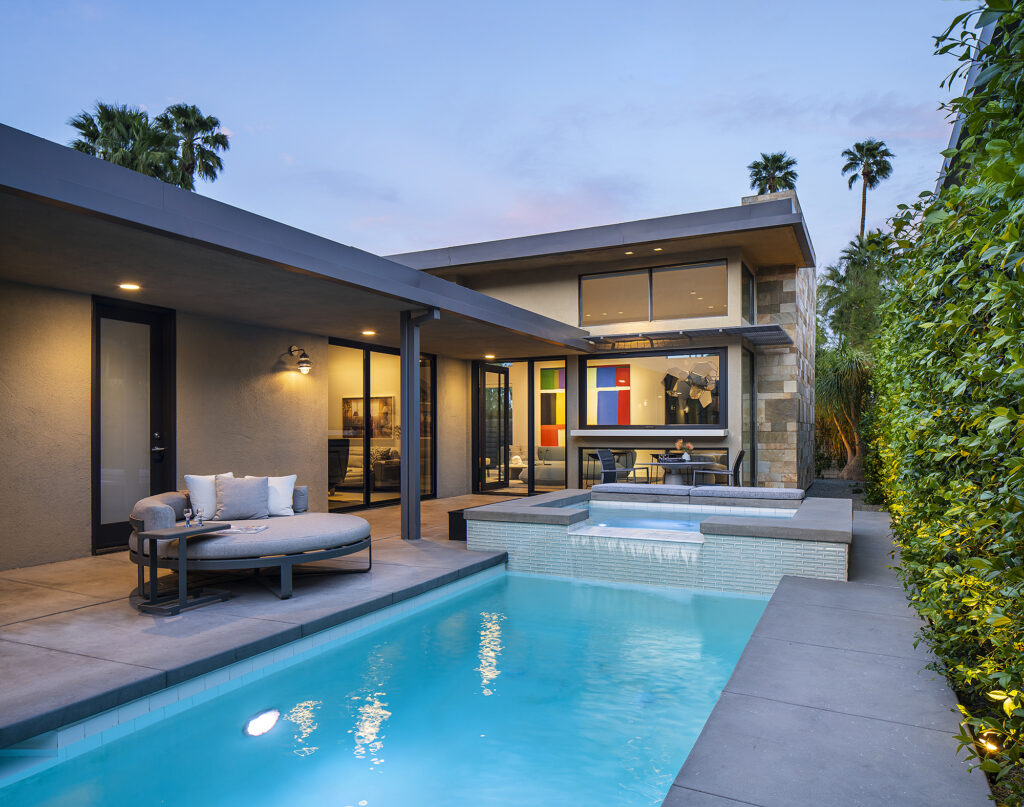Interior Design: Bodron/Fruit
Text: Erika Heet
Photography: Manolo Langis
Published as:
DESERT JEWEL
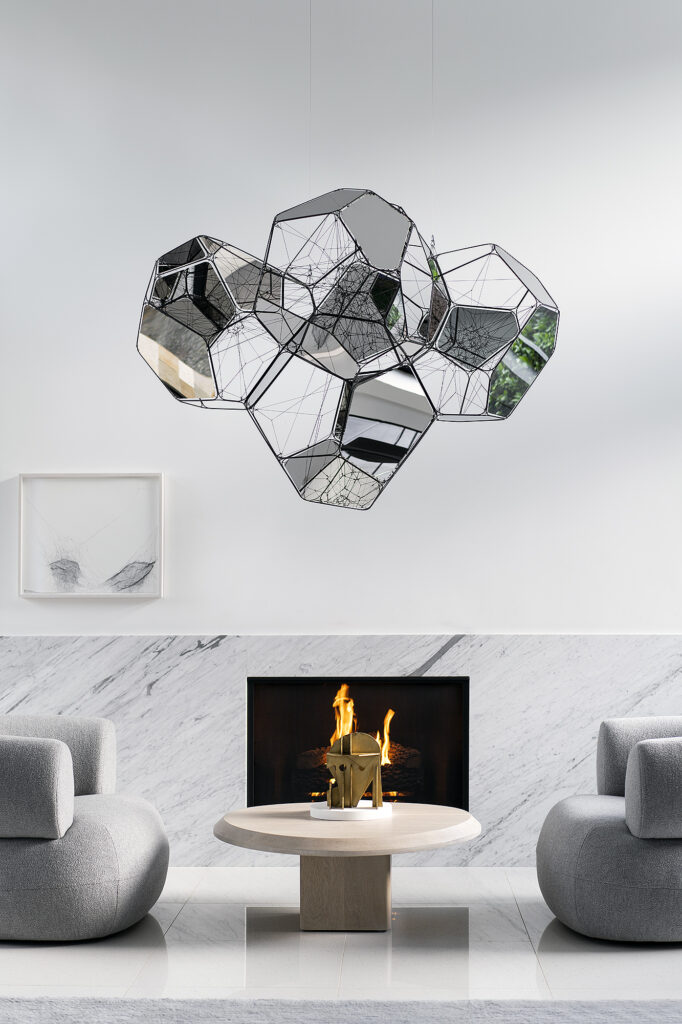
Palm Springs is best known for its arid, sleepy beauty, midcentury modern architecture, and art, for better or worse (sorry, Marilyn). Its year-round bliss draws people from everywhere to the desert haven beneath the towering peak of Mount San Jacinto. One of these visitors is veteran broadcast journalist and philanthropist John Denison, who hails from Louisiana and relocated to Palm Springs in 2018, settling into an early aughts house whose horizontal planes borrow heavily from the area’s iconic architecture. Denison asked Dallas-based firm Bodron/Fruit to create a more cohesive atmosphere and meditative background for his growing collection of contemporary art.
Among design’s most overused cliches is “I didn’t want it to look like a museum.” With pieces coming in from the likes of British sensation Thomas Houseago, widely knocked off Argentinian-born Tomás Saraceno and British conceptual realist Gillian Wearing, Denison refreshingly welcomed a museum-like approach to the design. “We wanted a sophisticated neutral palette from the beginning as a backdrop for art,” says principal Mil Bodron, who worked with Dustin Penney on the interiors. “Interestingly, the first item selected after a furniture plan had been developed was the ice blue living room sofa. We did not want the direction to develop into an expected, colorful Palm Springs aesthetic, but felt like the sofa color related to the color of the adjacent swimming pool, therefore being somewhat of a neutral.” This Cassina sofa and its ottoman, which resemble pale cerulean pebbles whose edges have been gently smoothed by water over time, supports the living room’s greatest distraction, Gotham by Stanley Whitney, a series of abstract color squares in oil on linen.
Architectural updates, conjured by principal Svend Fruit with Michelle Tarsney, included a new, acid-washed concrete treatment replacing a wood deck at the entrance courtyard and pool terrace, the installation of a new oversize pivot front door and, adjacent to that, a casual dining ledge flanked by barstools, with an updated pass-through window that swings open “to connect inside with outside,” Fruit says. All of the interior lighting was replaced in anticipation of the art, and a stone-faced fireplace wall was traded for a low-slung white marble slab. Here, a drawing by Saraceno is set off-kilter just above the marble, while his geometric pendant sculptures hover above a simple round wood table holding a brass sculpture by Houseago. Just off the living room, the galley kitchen received a cohesive white porcelain makeover, and in another clever attempt to showcase the art, the firm installed sliding panels from Glas Italia that can completely close off the kitchen to avoid any visual interruption. When the panels are closed, all one can see is the idea of a room and Metal Box (Mombasa), a striking multicolored wall sculpture by Jim Lambie.
The ever-prevalent Palm Springs color explosions are mercifully absent from the entertainment lounge and primary bedroom. In the former, Genevieve Gaignard’s The Quietest Room in the House, created the year Denison moved to the desert, hangs above a soft gray sofa from Bosc Kouet and a light wood table from De La Espada. In the latter, a bed and nightstand found at Holly Hunt in Dallas set the scene in earthly neutrals, and Ted Kincaid’s photograph, The Wrestlers (for Thomas Eakins) joins an early 1970s drawing by Richard Tuttle, chosen, like all of the art in the house, by Denison and art advisor Michael E. Thomas out of Dallas. “We chose to balance the interior with varying shades of grays, and textures,” Bodron notes. “The intent was to create a beautifully monochromatic interior that would allow any color to come from the art and the outside.”
All of the rooms have the similar quality of wisely selected, high-level furnishings, curated with a trained eye and heavy restraint. “Furnishings of extreme simplicity must be of impeccable quality,” Bodron says. “I think it’s important for furnishings to be of high design to exist with great art so that the overall experience is of an equal level. I like it when the interior is confidently submissive to the art, which I see as quietly strong.” Bodron/Fruit, bodronfruit.com
